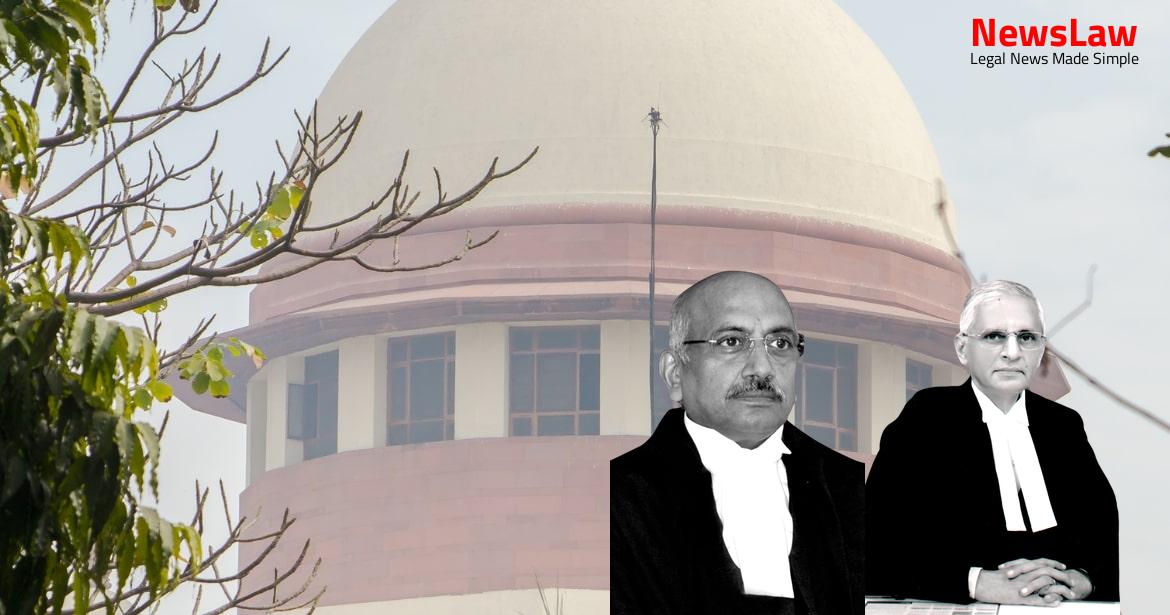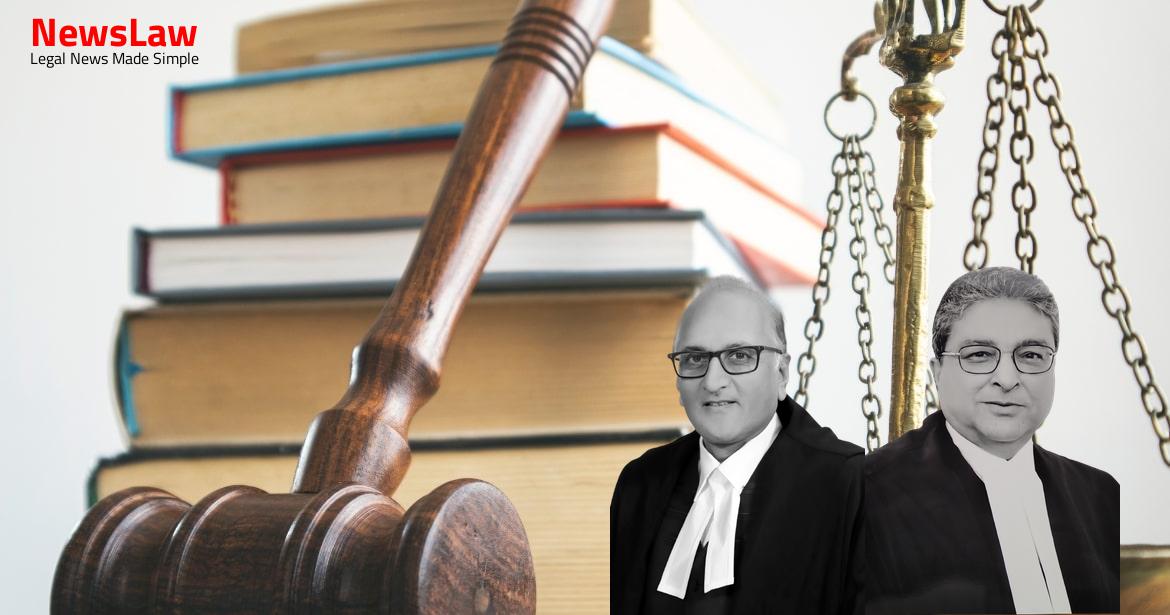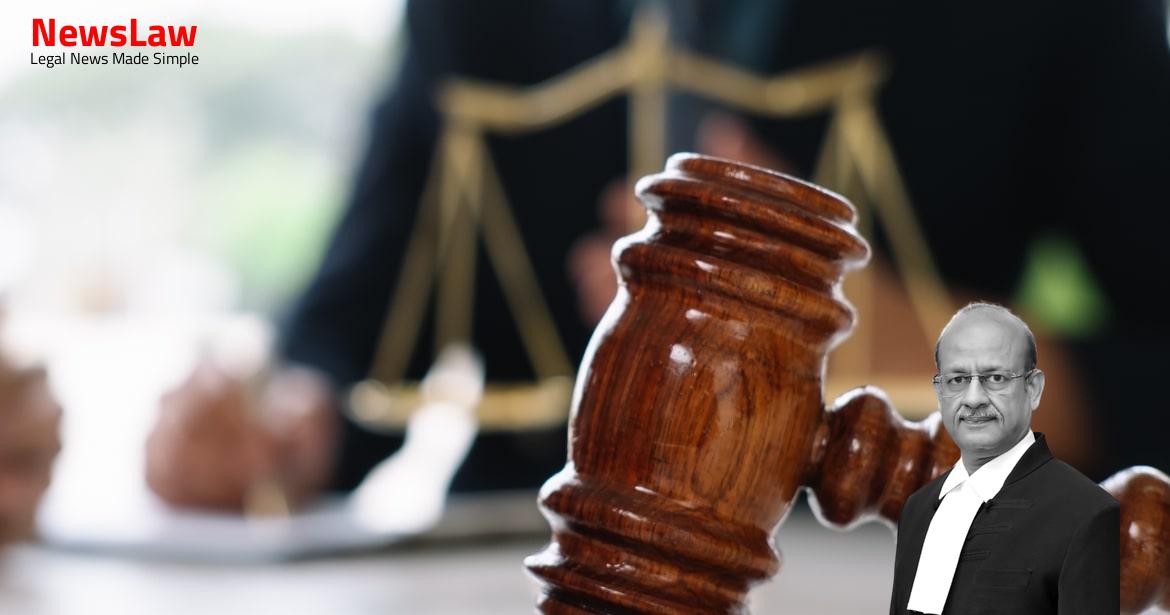Explore a detailed legal analysis focusing on the handling of circumstantial evidence in a contentious arson case. The court’s rigorous scrutiny of the prosecution’s evidence, evaluation of motive, and examination of the chain of events underscores the importance of establishing guilt beyond a reasonable doubt. Delving into the nuances of the legal principles involved, this case summary sheds light on the complexities of criminal law and the critical role of evidence in determining the outcome of a trial.
Facts
- The mother-in-law had gone to her daughter’s place to assist her for delivery.
- Mandabai and her daughter Nikita died due to burn injuries suffered by them in the hospital.
- Gulab had an extramarital affair with the appellant and eventually married her.
- Accused Nos. 2 and 3 were acquitted by the Sessions Court.
- The appellant’s husband had gone to Jalna on 02.08.2006 to procure tires for the tractor.
- The appellant, Gajanan’s daughter-in-law Mandabai, and their children were residing in the house.
- An incident of fire occurred on the intervening night of 2/3.08.2006, engulfing the house.
- The appellant came out of the house unscathed, while Mandabai and their daughter Nikita rushed out with burn injuries.
- Prosecution’s case stated that Mandabai and Gulab had two children, Akash and Nikita.
- The father-in-law instructed the servant to shift Mandabai and Nikita to the hospital.
- The appellant is appealing the High Court judgment in Criminal Appeal No. 488/2007.
- The High Court did not find the extra-judicial confession credible due to the informant’s relationship with the deceased Mandabai.
- The Sessions Court inferred guilt based on kerosene residues on the appellant’s clothing and lack of burn injuries on her.
- The motive for the crime was attributed to the appellant’s desire to assert dominance as the second wife.
- The High Court upheld the Sessions Court’s conviction, noting the lack of injuries on the appellant as suspicious.
- The Sessions Court deemed the appellant’s motive and opportunity strong, ruling out accidental fire as a possibility.
Also Read: Analysis of Commencement Date in Gratuity Act Amendment Case
Arguments
- High Court concluded evidence of prosecution not trustworthy
- High Court assumed appellant not suffering injuries in fire as basis for conclusion
Also Read: Interpretation of Will and Hindu Succession Act: Legal Analysis
Analysis
- The High Court relied on circumstantial evidence to conclude the appellant set the deceased and her children on fire.
- The prosecution failed to establish a complete chain of circumstances to convict the appellant.
- The High Court’s reasoning was based on suspicion rather than proof beyond a reasonable doubt.
- The appellant’s lack of injuries was deemed a material circumstance, but doubts arose due to various aspects of the case.
- The High Court’s conclusion was seen as based on probability rather than proof beyond a reasonable doubt.
- The High Court’s reasoning on the appellant not explaining the fire’s eruption under Section 106 was deemed unsustainable.
- The trial court considered evidence that if the fire was accidental, the appellant should have also sustained burn injuries.
- Motive based on the second marriage and other circumstances was not accepted as compelling by the appellate court.
- Certain recovered evidence, like the frock with kerosene stains, was mentioned but not necessarily conclusive due to doubts surrounding the recovery method and analysis.
- The Court emphasized the distinction between ‘may be proved’ and ‘must be or should be proved’ in the context of establishing guilt beyond reasonable doubt.
- Five golden principles were outlined for proving a case based on circumstantial evidence.
- The need for a complete chain of evidence to exclude any reasonable ground for innocence was emphasized.
- The absence of explanation or a false explanation can be an additional link in the chain of evidence only if certain conditions are met.
- The presence of kerosene stains alone cannot be conclusive evidence of guilt without other supporting circumstances.
- The necessity of establishing links in the chain of circumstances for conviction based on circumstantial evidence was reiterated.
- The importance of fulfilling specific conditions before considering a false explanation as an additional link was highlighted.
- Mere suspicion is deemed insufficient, and circumstantial evidence must lead to the conclusion that it ‘must be true’ and not just ‘may be true.’
- The need to evaluate the chain of events clearly and completely to rule out any reasonable likelihood of the accused’s innocence was stressed.
- The court cannot sustain the order of conviction for the appellant due to lack of evidence supporting the cause of fire provided by the appellant.
- The appellant’s explanation for the cause of fire would only hold if there was additional evidence indicating she was already awake and outside before the fire broke out.
- Considering all aspects of the case, the benefit of doubt favors the appellant, leading to her acquittal.
- The fire allegedly occurred at midnight while the appellant and others were sleeping, with her being the one who raised the alarm.
Also Read: Legal Analysis of Pujaris’ Rights in Temple Land Ownership
Decision
- Appellant Parubai on interim bail is set at liberty
- Bail bond shall stand discharged
- Pending applications disposed of
- Judgment dated 12.10.2017 passed by High Court affirming conviction and sentence set aside
- Appeal allowed
Case Title: PARUBAI Vs. THE STATE OF MAHARASHTRA (2021 INSC 393)
Case Number: Crl.A. No.-001154-001154 / 2018



